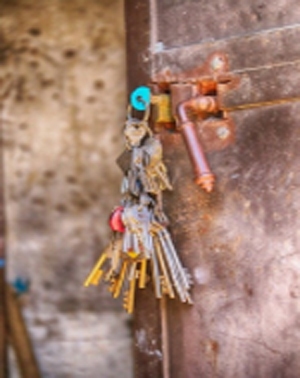Affordable Locksmith OKC | (405) 367-3484 | Locksmith OKC OK






Tips to Fix a Sticky Lock

Sticky locks are a common problem that takes place in every household quite often. This is especially a hindrance with old doors. This is caused as a result of excess dirt being amalgamated into the lock that makes it difficult for specific mechanisms to work that enables smooth operation. Once a lock gets stuck, it can get quite difficult to operate, and you need to call in professionals to do so. For the best results, hire reliable key fob replacement OKC services.
However, it can be done with the help of some easy tips and techniques.
1. Spray lock using WD-40
This is common lubricating oil found in every household, beneficial for door hinges or bicycle chains. If the lock is not in a very poor condition, WD-40 can be everything you need. You need to attach the straw of the applicator to the can nozzle. Insert the straw near the lock opening while spraying WD_40 in the lock. Use the oil in a liberal amount that helps solve the problem.
Keep on holding the spray button until WD-40 does not begin overflowing from the opening of the lock. However, always remember to wear gloves during the entire procedure. Let the lubricant stay on for some time, which offers the opportunity for the dirt and dust to break down, enabling movement.
2. Use powdered graphite
Powered graphite refers to a unique dry that helps the metal surfaces to stay liberated and move about independently. Moreover, it also does not attract any amount of dirt, unlike the traditional lubricants. This graphite is a great option for sticky lock and when the key gets trapped inside it.
This material has been thoughtfully designed to enable smooth operation between two distinct metal surfaces. Most of these containers comprise a film at the tip that needs to be removed in order to be used. Squeeze the container in order to release few puffs of the graphite into it.
Do remember not to take an excess amount and allow the graphite to get its work started. After this, try inserting the key in the lock and check it if works or not. Keep turning the knob to ensure the graphite can successfully lubricate the surrounding area near the latch.
3. Test the lock
Turn the knob and lock the lock to check whether it is working properly or not. If the lock does not operate in a smooth manner, then you can loosen the screws while realigning the cylinder along with latch bolts. Repeat this same procedure for lubricating deadbolts as well.
At first, remove the connecting screws, faceplate screws along with the knobs. Follow the next process by pulling the latch bolt assembly while cleaning and lubricating the lock as have been described. Reverse this process in order to reassemble the lock.
Conclusion
These tips are extremely helpful in fixing a sticky lock. While professionals can charge you a hefty fee, these simple, affordable tips can help in fixing the problem in a short span of time. If none of them works, check whether a loose pin has been stuck that however needs to be replaced. For your car’s security, hire reliable key fob replacement OKC services.



